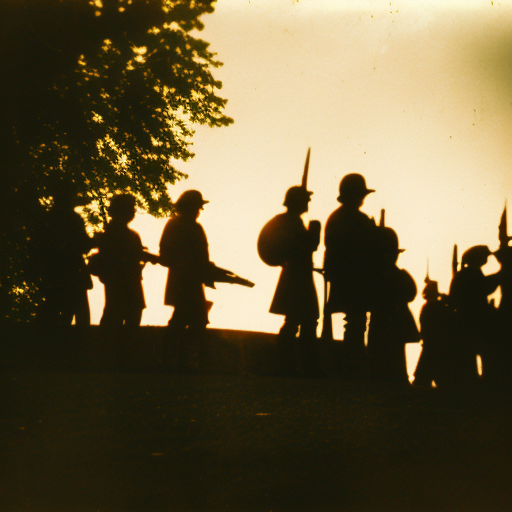Battle of Queenston Heights: A Turning Point in the War of 1812
The Battle of Queenston Heights, fought on October 13, 1812, was a significant turning point in the War of 1812 between the United States and Great Britain. It was one of the first major battles of the war and resulted in a decisive victory for the British forces led by Major General Sir Isaac Brock.
The Context: War of 1812
The War of 1812 was a conflict between the United States and Great Britain that arose from various issues, including trade restrictions, British impressment of American sailors, and territorial disputes. The United States declared war on Britain in June 1812, seeking to assert its independence and expand its territory.
The Battle Begins
The Battle of Queenston Heights began when American forces, under the command of General Stephen Van Rensselaer, launched an attack on the British position at Queenston Heights, located on the Niagara River. The Americans aimed to capture the heights and gain control of the river, which would provide a strategic advantage in the region.
Brock’s Heroic Stand
Despite being outnumbered, Major General Isaac Brock led the British defense at Queenston Heights. He quickly organized his troops and successfully repelled the American assault, inflicting heavy casualties on the enemy. Brock’s leadership and bravery inspired his men and boosted their morale.
Sheaffe’s Reinforcements
As the battle raged on, the American forces managed to gain a foothold on the heights. However, British reinforcements, led by Lieutenant Colonel Roger Hale Sheaffe, arrived just in time to turn the tide of the battle. Sheaffe’s troops launched a counterattack, pushing the Americans back and retaking the heights.
The Death of Brock
Tragically, Major General Isaac Brock was killed during the battle. His death was a significant loss for the British, as he was widely respected and admired for his leadership skills. However, his sacrifice and the British victory at Queenston Heights became a rallying point for the British and Canadian forces, inspiring them to continue the fight against the Americans.
The Surrender of the Americans
Following the death of Brock and the arrival of British reinforcements, the American forces found themselves in a precarious position. Cut off from retreat and facing heavy losses, they were forced to surrender. Approximately 900 American soldiers were taken as prisoners of war.
Significance and Legacy
The Battle of Queenston Heights was a significant turning point in the War of 1812. It demonstrated the resilience and determination of the British and Canadian forces, boosting their morale and inspiring further resistance against the American invasion. The victory at Queenston Heights also highlighted the importance of strong leadership, as Major General Isaac Brock’s actions and sacrifice became a symbol of heroism and patriotism.
The battle had broader implications as well. It showed that the United States would not have an easy victory in its attempt to conquer Canada, and it bolstered British and Canadian confidence in their ability to defend their territory. The Battle of Queenston Heights also had political repercussions, as it led to increased support for the war effort in both Britain and Canada.
In conclusion, the Battle of Queenston Heights was a pivotal moment in the War of 1812. Major General Isaac Brock’s leadership and the successful defense of the heights by the British and Canadian forces turned the tide of the battle and inspired further resistance against the American invasion. The victory at Queenston Heights had significant military, political, and morale-boosting effects, ultimately shaping the outcome of the war.












